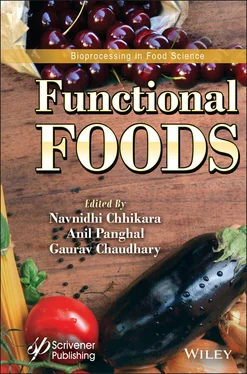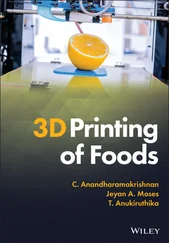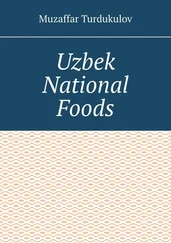To get back to the history of functional foods, one of the first examples of a functional food with a specific health claim. The earliest attempt for functional food formulation by incorporating functional ingredients was iodized salt in early 1900. Iodine was added as functional ingredient to prevent goiter, prevalent health concern of that time. Unilever designed polyunsaturated fatty acids rich spreads to deal with issue of elevated cholesterol level in late 1960s. Spreads under Becel and flora brand were launched with modified triacylglycerol profile with elevated PUFA with target patients of hypercholesterolaemic initially [6]. Following this trend, different health associations like National Heart Foundation of Australia, 1999; Health Council of the Netherlands, 2001 strongly advocated the significance of the ratio of polyunsaturated fats to saturated fats in diets at global level. Later on, such products were in category of mainstream products for all types of consumers [7]. This clearly demonstrates that the functional food can be targeted to particular group of people and simultaneously will assist in overall health improvement of public. Further research and new product developments were done in spreads by incorporating plant sterols or stanols for availing for health benefits [8]. This again demonstrates that developments in nutritional science can be incorporated successfully into functional foods, if there is sufficient consumer awareness and need. However, sound science and perceived consumer need from a public health perspective are no guarantee for the success of functional food products, as unfortunate examples of unsuccessful market introductions show. It is hard to predict the prerequisites for success of a functional food, but factors undoubtedly include consumer need and awareness; consumer acceptance of a food solution; powerful communication of health benefits to the consumer; uncompromised taste; optimal convenience; adequate retail or out-of-home availability; proven safety and efficacy; acceptable price level; assurance and support from different sources, including scientific opinion leaders; and a clear regulatory framework for making claims, providing a level playing ground for all companies.
Table 1.1 Different commercial functional foods available in the global market.
| Product type and name |
Functional component |
Company |
| Probiotic foods |
| Actimel |
Yoghurt, Lactobacillus casei |
Danone, France |
| Activia |
Creamy yoghurt, Bifidus Actiregularis |
Danone, France |
| Proviva |
Yoghurt, Lactobacillus Plantarum |
Skane mejerier, Sweden |
| Vitamel |
Dairy products containing Lactobacillus casei GG, Bifodobacterium bifidum, Lactobacillus acidophilus |
Campina, the Netherlands |
| Vitality |
Yogurt with pre- and probiotics and omega-3 |
M”uller, Germany |
| Yakult |
Probiotic milk with Lactobacillus casei Shirota |
Yakult, Japan |
| SOYosa |
Products based on soy and oats and includes a refreshing drink and a probiotic yogurt-like soy—oat product |
Bioferme, Finland |
| Functional food ingredients |
| Omega-3-Soybean oil |
Eicasopentanoic acid |
Monsanto, USA |
| High oleic acid |
Frying and baked goods |
Dupont, USA |
| Conventional foods |
| High protein cassava |
Transgenic variety with higher protein content |
Biocassava plus International Consortium |
| Sugar beet |
Soluble fiber and low calorie sweetener |
Florimond Desprez, France |
| Tomatoes with high folic acid |
25 times more folic acid |
University of Florida, USA ’ |
| Dietary supplements |
| DHA Omega 3 |
Fetal development |
Natrol, USA |
| CetylPure |
With Cetyl myristoleate fatty acid, for joint health |
Natrol, USA |
| Sunthi |
Carmative and gastrointestinal tract stimulant, for indigestion and nausea |
Himalaya Healthcare, India |
| Fortified Chocolates |
Calcium fortified chocolate |
Thompson Candy Company, Meriden, USA |
| Oats fortified with vitamins, minerals, folic acid |
To meet specific nutritional requirements |
Marico’s India |
| Double fortified salt |
Iron and Iodine fortification to meet requirements |
Tata Consumer Products, India |
| Vitamin fortified sugar |
Healthy body and good eye sight |
National Food and Nutrition Commission, Zambia |
1.2.2 Definition of Functional Foods
Following Japan other countries and various scientific organizations attempted to create their own definitions of functional food. Along with the increase in sales worldwide, confusion among the public related to functional food also increased.
Following are the definitions given by few organizations:
• The Institute of Food Technologists (IFT), United States defined functional foods as “Foods and food components that provide a health benefit beyond basic nutrition. The food assists in normal maintenance, growth and development, and/or other biologically active components that impact health benefits” (2005).
• Food and Nutrition Board, National Academy of Sciences, United States “Foods that encompass potentially healthful products, including any modified foods or food ingredients that may provide a health benefit beyond the nutrients it contains”.
• Foods for Special Dietary Use (As defined by the Federal Food, Drug, and Cosmetic Act) “A particular use for which a food purports or is represented to be used, including to the following: -Supplying a special dietary need that exists by reason of a physiological, pathological, or physical condition -Supplying a vitamin, mineral, or other ingredients for use by humans to supplement the diet by increasing the total dietary intake -Supplying a special dietary need by reason of being a food for us as the sole item of diet” (2015).
• Food and Drug Administration Does not provide a legal definition for the term “functional foods,” which is currently used as a marketing idiom for the category (2015).
• American Dietetic Association (ADA), leading nutrition organization defines functional foods as “whole, fortified, enriched or enhanced” that should be consumed regularly and at effective amounts in order to derive health benefits.
However, more advanced definitions of functional food include bioactive compounds, their activity, and their effectiveness for health benefits [9]. Functional Food Centre (FFC) has suggested more advanced definition. FFC defined “functional foods” at 17th international conference in 2014, which the U.S. Department of Agriculture (USDA) and Agricultural Research Service (ARS) jointly organized, in Panel Discussion entitled: “The Definition of Functional Foods and Bioactive Compounds” as: “Natural or processed foods that contain known or unknown biologically-active compounds; which, in defined, effective, and non-toxic amounts, provide a clinically proven and documented health benefit for the prevention, management, or treatment of chronic disease” [10, 11].
Nutraceutical Foods
Stephen DeFelice, Chairman of Foundation for Innovation in Medicine (FIM), United States coined the term “nutraceutical” from “nutrition” and “pharmaceutical” in 1989. Nutraceutical are “a food (or part of a food) that provides medical or health benefits, including the prevention and/or treatment of a disease”. Nutraceuticals are different from dietary supplements as nutraceuticals not only supplement the diet but also play important role in prevention/curing of any disease [12]. These can be complete meal or conventional food.
Читать дальше










